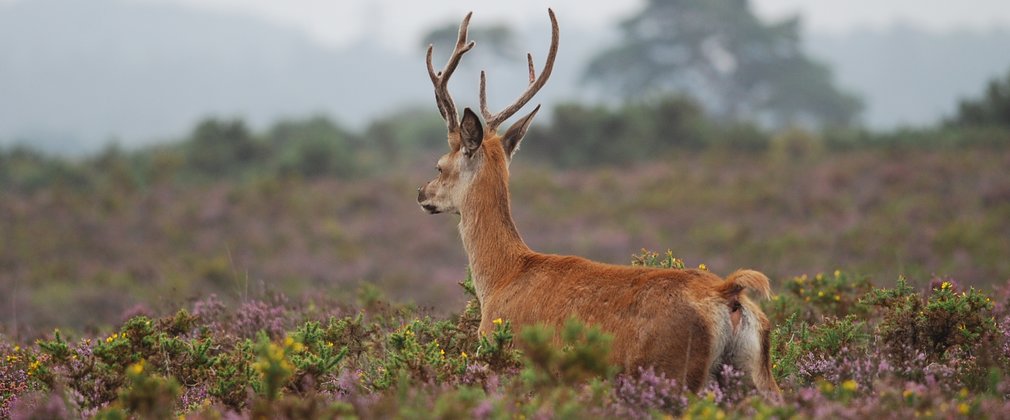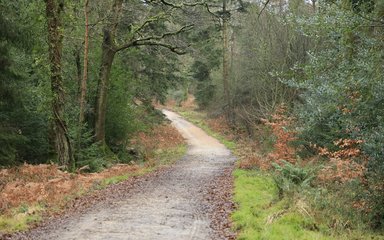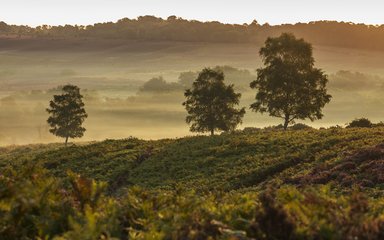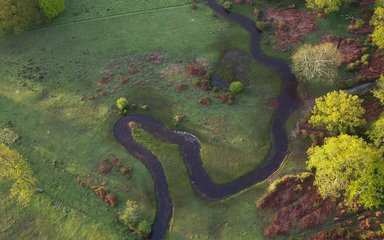The red deer rut
The New Forest is a great place to see deer in their natural environment, but it is important to remember that they are wild animals and should be treated with respect. This is particularly the case during rutting season in the autumn when stags are fighting for territory.
The red deer rut begins in September and lasts until around early November. During this time, competing males, pumped full of testosterone, will engage in a series of behaviours aimed at showing off to the hinds (female red deer) and establishing dominance over other stags. Stags can be seen walking alongside one another threateningly, in a behaviour called parallel walking. They will stamp the ground and roar fiercely. If two stags are of a similar size, and these behaviours don't sufficiently establish a winner, they will literally 'lock antlers' and fight for dominance. The fights are ferocious and decisive and the winner takes all. The master stag will mate with all the hinds in a 'harem' which could be up to 20 or so hinds. The females give birth, after a winter pregnancy, in May or June.
The rut is an amazing natural spectacle to witness, although people shouldn’t get too close to the competing stags!
Always put the welfare of the deer first
Keep 100 meters between yourself and the deer (roughly the length of a football pitch) and never surround them. We ask all photographers to follow the British Deer Society’s best practice code of conduct for photographers and recommend a lens with a focal length of at least 300mm.
Photography and permissions
You are welcome to take photographs for personal or educational use. Commercial photography requires a permit and the charges and terms and conditions vary. Please get in touch with our team and complete a permission application form in advance of your visit. Find out more.
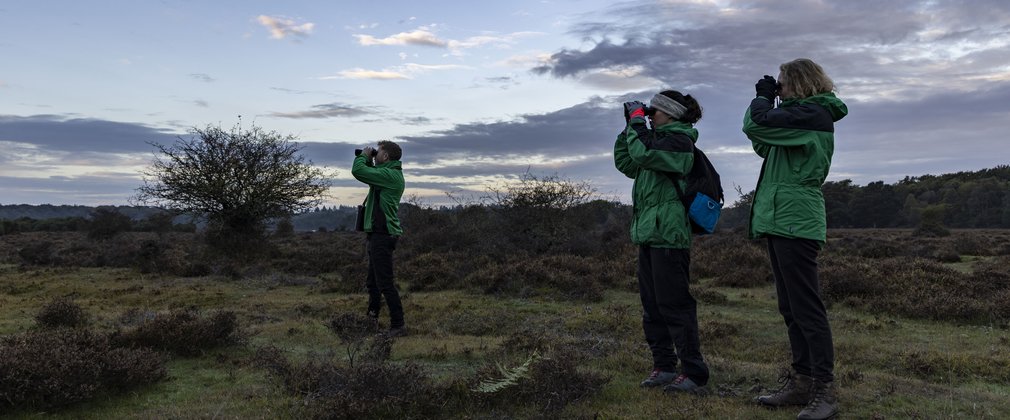
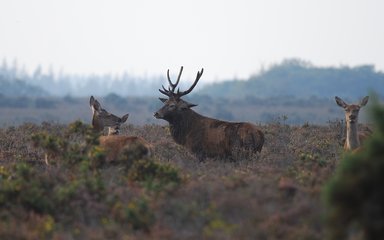
Red deer (Cervus elaphus)
The red deer is the largest land mammal in the UK, standing at up to 137cm tall at shoulder height and weigh between 90 to 190kg. Male red deer are called stags, females are hinds and the young are calves. They have a rusty red colour during summer which turns to brown during winter.
The stag's antlers are an outward display of the male deer’s masculinity. The growth of the antlers is driven by testosterone and peaks in the early autumn when the rut starts. The deer's testosterone levels drop in the early winter and the antlers eventually drop off. Regrowth begins again in the spring, usually bigger and better than the year before.
Protecting the deer
Our deer conservation areas are important for the protection of red deer. These quiet areas are for the deer to rest and feed and we ask members of the public not to enter them and stick to the main tracks. Look out for our red signs, to avoid disturbing them.
Unfortunately, many people are getting unacceptably close and disturbing them while they rest during the rut. This has dramatically affected their behaviour, with the wild herd not able to rest or move freely, they are being pushed towards nearby roads which is not safe for the animals or motorists.
Wilfully disturbing wildlife could result in prosecution.
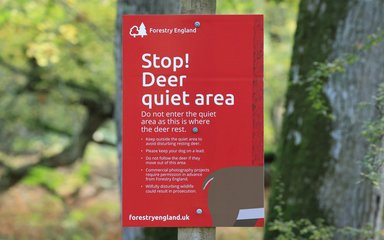
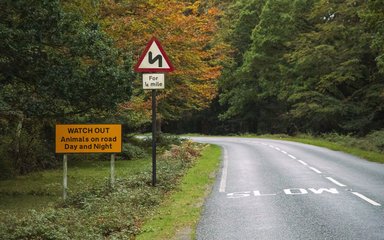
Drive to the conditions
At this time of year drivers should watch out for wild deer on Forest roads at night, or early in the morning. Extra care should be taken if you’re driving on unfamiliar roads and be wary of not just one deer crossing the road, it’s best to stop and wait a moment as they often travel in groups. Reducing your speed to 30mph will just add three minutes to your usual journey and can dramatically reduce the number of animals injured or killed on the roads.
How you can help prevent distressing deer
It is important to remember that deer are wild animals and should be treated with respect, please:
- Keep to the main tracks
- Keep dogs on lead near to deer conservation areas
- Keep your distance - binoculars or a zoom lens are essential!
- Do not approach, follow or surround deer
- Do not enter the quiet areas - look out for the red signs!

